




Quick Links:





The Department of Health, Safety and Environment (HSE) has been charged to develop a robust system to ensure the safe and legal disposal of hazardous waste generated on campus, and provide guidance for hazardous waste management and disposal services for all King Abdullah University of Science and Technology (KAUST) operations. KAUST utilizes international best practices and guidance from national and local waste requirements. These requirements apply to all hazardous waste generated by KAUST spaces and impose specific requirements on all hazardous waste generators.
For all hazardous waste questions, please contact hse@kaust.edu.sa
For hazardous waste pickup, Email: hse.hazwastepickup@kaust.edu.sa
The Research Safety Team will make the final Hazardous Waste determination of all materials submitted for Hazardous Waste disposal at KAUST.
Generally speaking Hazardous Waste is "any unwanted or discarded chemical material that has properties that make it dangerous to health or the environment when improperly treated, stored, transported, used, or disposed". Generally, a hazardous waste must exhibit at least one of the following characteristics to be considered hazardous:
Ignitability (flash point below 60oC (140oF)
Corrosivity (pH ≤2 or ≥12.5)
Reactivity (water reactive, shock sensitive, generates toxic gas)
Toxicity (acutely toxic, carcinogenic, reproductive toxin, etc.)
Process / General Requirements
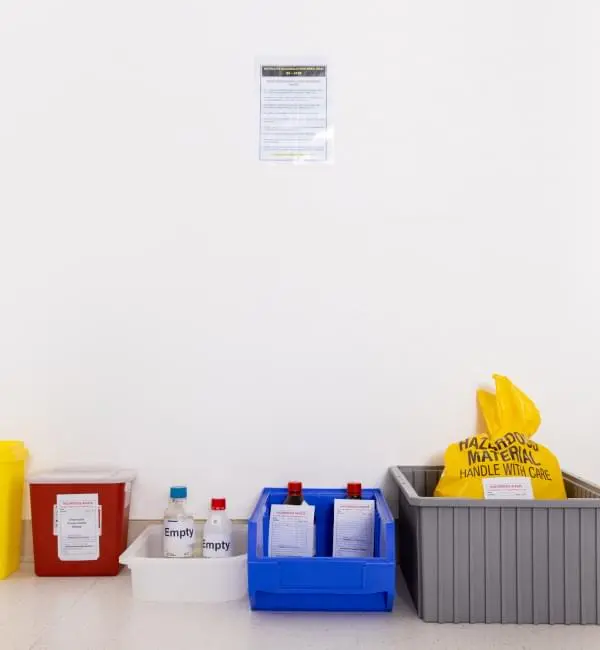
Hazardous Waste in satellite accumulation areas is inventoried every Monday and Tuesday by Site Services personnel. Every Wednesday morning (09:00 – 11:00), hazardous waste that is properly prepared is collected by Site Services personnel. Any hazardous waste that is not properly prepared will be rejected for collection.
If you need a hazardous waste collection or are requesting an extra hazardous waste collection, due to heavy volume, please contact HSE.hazwastepickup@kaust.edu.sa
Waste avoidance benefits everyone. Generating less waste means less risk of harm to people or to the environment. It saves money and resources. It leads to a safer workplace by lessening risk of employee exposure to harmful chemicals and reduces the chance of accidents associated with handling waste. All laboratory employees are responsible for actively taking steps to eliminate the generation of hazardous waste where possible using techniques such as:
Substitute with less hazardous materials.
Reduce volumes by scaling down experiments.
Avoid co-mingling hazardous and non-hazardous wastes – the combined volume must be considered hazardous waste.
Purchase only the quantity of material that is actually needed. • Reduce hazards – chemically neutralize corrosives.
Waste chemicals shall be collected in individual, leak proof, sealed containers. Be sure that the chemical contents are compatible with the container-material selected. Acid wastes should not be placed in metal containers. Glass containers should not be used for hydrofluoric acid or very strong bases (alkalis). A wide variety of waste containers are available through the KAUST service provider.
If there is suspicion that mixed waste materials could react or are incompatible in any way, the wastes should not be combined and should be kept in separate containers to prevent hazardous reactions.
Leave adequate headspace above the liquid level to allow for expansion.
Ensure that the container has a tight-fitting screw cap lid or seal for transportation – unsuitable lids/seals: parafilm, foil, corks, stoppers, etc.
Therefore, containers with these kinds of tops will not be picked up for disposal.
Hazardous waste containers shall remain closed except during filling. Do not leave funnels in waste containers.
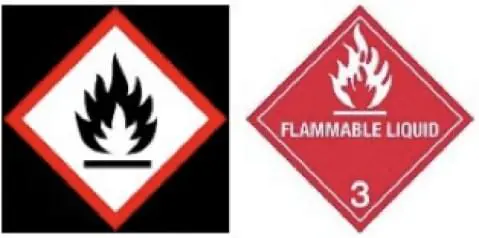
Any liquid having a flash point below 60oC (140oF) and any non-liquid with vapors capable of causing fire.
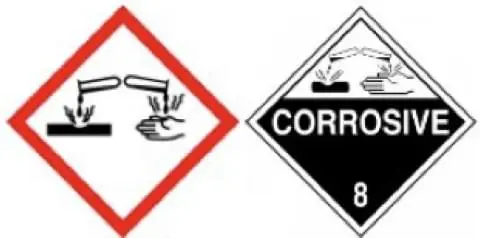
An aqueous liquid with a pH of ≤2 or ≥12.5 or a material that causes irreversible tissue damage or corrodes metal.
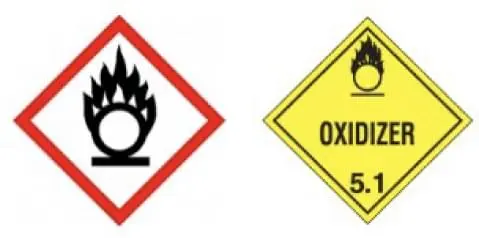
A chemical other than a blasting agent or explosive that initiates or promotes combustion in other materials, thereby causing fire either of itself or through the release of oxygen or other gases.
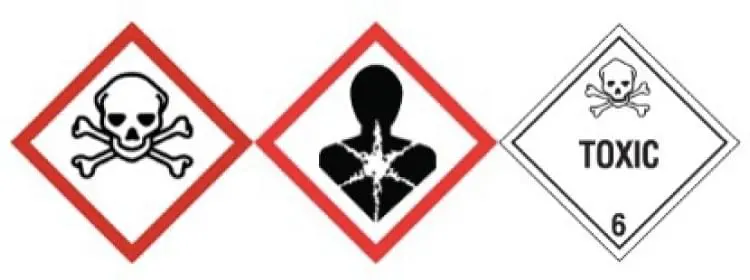
For Hazardous Waste disposal purposes on KAUST toxic materials are:

A material (or mixture of materials) which is in itself capable by chemical reaction of producing gas at such a temperature and pressure and at such a speed as to cause damage to the surroundings. Explosives will not be allowed for disposal at KAUST.. Any materials that are explosive or potentially explosive will need to be destroyed in the lab before disposal or stabilized to render them less hazardous before acceptance for disposal.

Materials that react violently when they come into contact with air. Most of these materials are pyrophoric.

“A material that is contaminated with biohazardous materials (transgenic plants or animals, all pathogenic materials [either human, animal, plant], all recombinant or synthetic nucleic acid molecules, all human and primate materials (except tears, sweat, urine or saliva), Risk Group 1 or 2 materials) is assumed to present an infectious disease transmission risk or an environmental release risk, and is to be treated as biohazardous waste.” KAUST Biosafety Manual
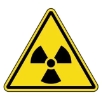
A solid or liquid waste that is comprised of unstable radionuclides that emit ionizing radiation. All radioactive waste on KAUST is managed under the Radiation Safety Program and is administered by the Research Safety Team. Go to the Radiation Safety webpage for further information.

In this category there are materials toxic to aquatic life, Miscellaneous Dangerous Goods, Other Regulated Materials (ORM), etc.
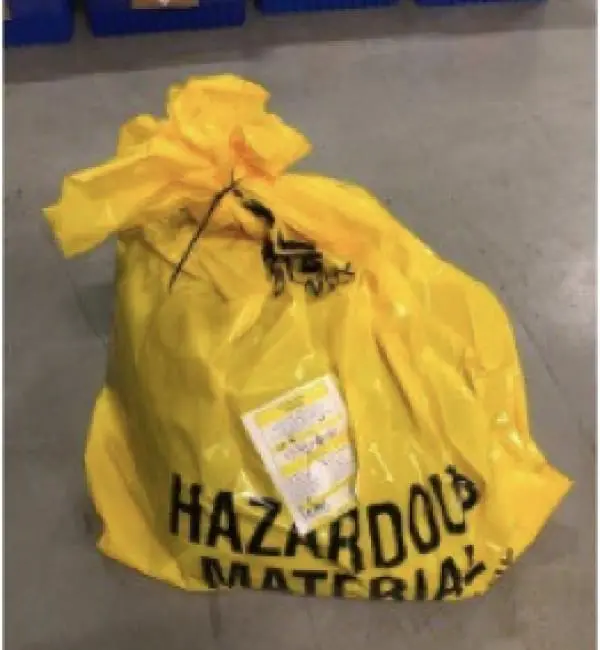
Yellow bags of hazardous waste are for items that are chemically contaminated in trace quantities. Items/debris such as gloves, paper towels, bench paper, empty plastic containers, etc. Yellow bags of hazardous waste must not contain free liquids, glass bottles, broken glass, sharp objects, protruding objects, etc. Yellow bag hazardous waste must be securely closed and have a properly completed/filled out hazardous waste label attached. Label the contents as “Chemically Contaminated Debris” and place in the satellite accumulation area for collection.
Yellow bag hazardous waste is labelled and securely closed with zip tie
Boxes of broken glass are for the disposal of broken glassware such as glass Pasteur pipettes, glass test tubes, glass slides, and broken glassware in general. The broken glassware box is for glassware that is trace chemically contaminated but not for grossly contaminated glassware.
Once broken glass boxes are ¾ full, seal the lid securely with tape and affix a hazardous waste label that has been properly filled out. Label the contents as "Trace Chemically Contaminated Broken Glass" and place in your satellite accumulation area for hazardous waste collection. Broken glass boxes will be rejected if they are not securely closed or have items protruding.
Broken glass box labelled and securely taped shut.
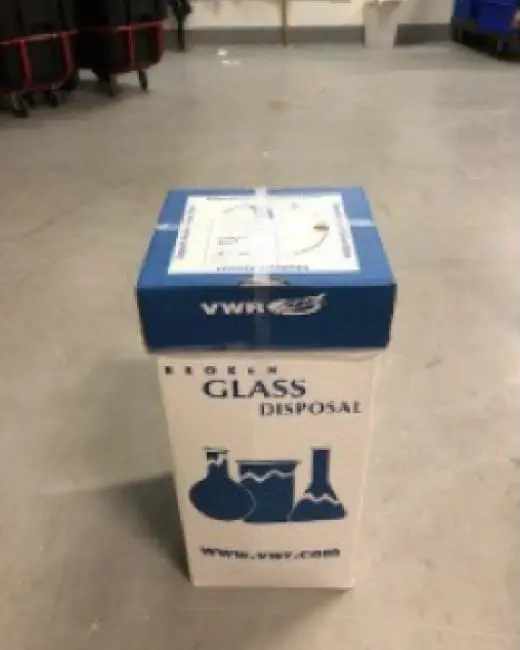
Waste sharps are items such as needles, syringes, razor blades, scalpels, bio-contaminated pipettes & tips, bio-contaminated glassware, etc. Once sharps containers are ¾ full, securely close it (tape maybe necessary) and affix a hazardous waste label that has been properly filled out. Label the contents as "Chemically Contaminated Sharps" or as "Biologically Contaminated Sharps" and place in your satellite accumulation area for hazardous waste collection. Sharps containers will be rejected if they are not securely closed.
Sharps containers need to be labelled and securely closed (tape maybe necessary).
Important note: If the contents are not biohazardous, then deface the Biohazard symbol.
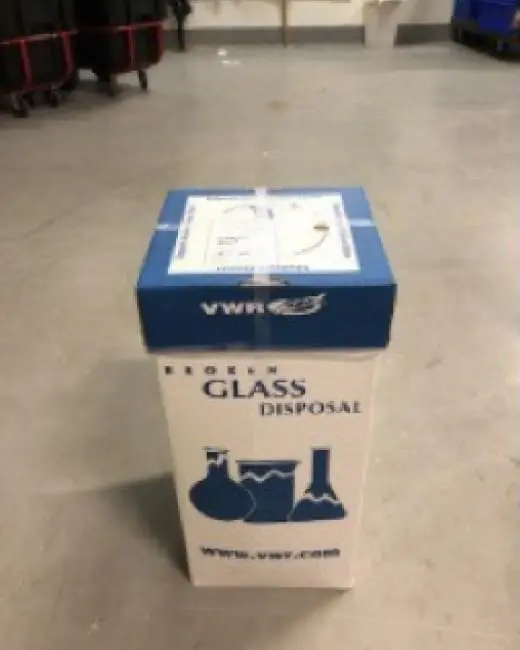
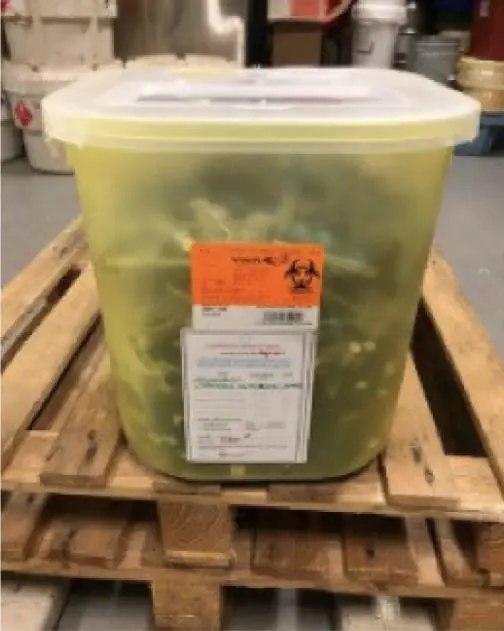
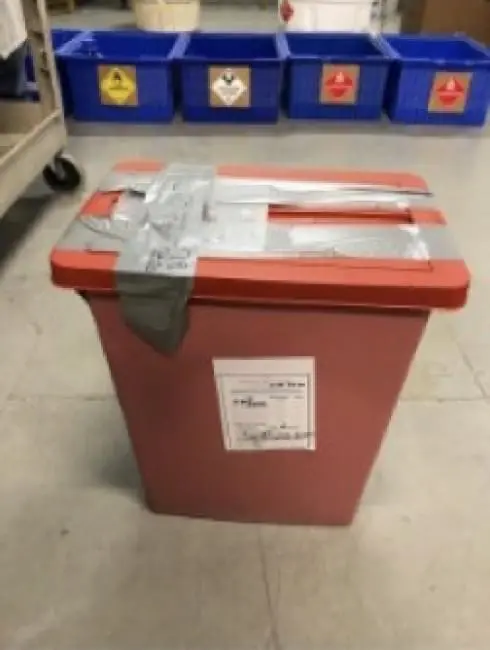
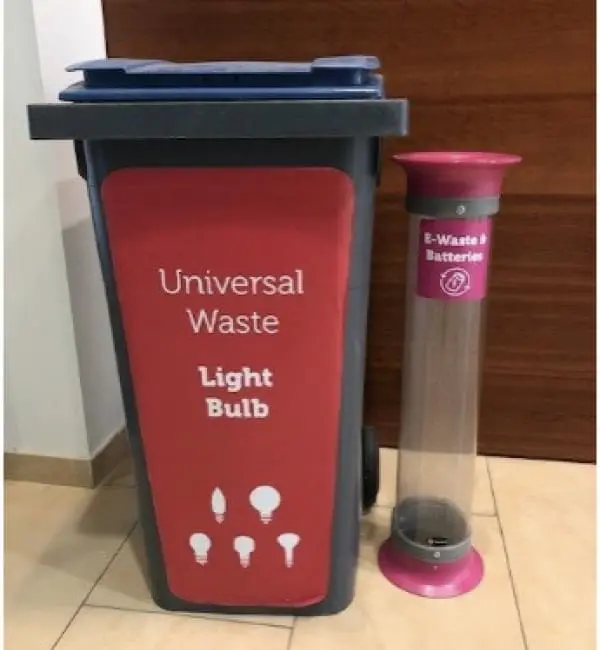
Unknown wastes are wastes that have not been properly labelled or identified as to their contents and so can be very hazardous. Due to the fact that the hazard profile must be ascertained, to allow for proper and safe storage and transportation, it is imperative that it be identified before it can be accepted for hazardous waste disposal. Contact the Research Safety Team ( hse@kaust.edu.sa) if you have an unknown waste that you wish to have disposed.
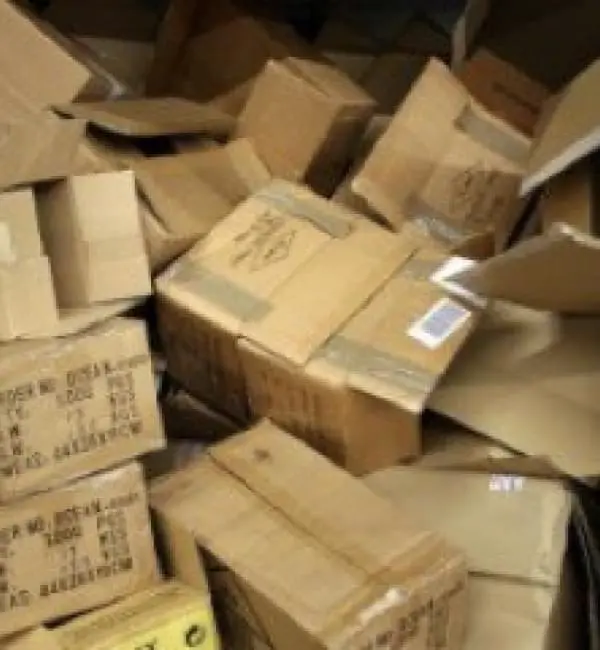
Hazardous Waste training is mandatory for all personnel who enter KAUST laboratories, along with Laboratory Safety and Emergency Incident Preparedness training. Hazardous Waste Training is available through Salute with live or on-line training options available. All personnel submitting hazardous waste must receive training before being allowed to submit hazardous waste.SALUTE Hazardous waste training

Note:
The hazardous waste labels can be filled out electronically, before printing, or manually once they are printed out. If done electronically the Date, Contents, Units, pH and FLOC all have drop down list features to facilitate clarity and uniformity. To acquire a Satellite Accumulation Area (SAA) Sign for your lab, Contact hse@kaust.edu.sa. Every SAA sign is custom made with the FLOC number designated on it.
Note:
All SAA signs must be visible from the Service Corridor hallway. This helps Site Services in identifying the SAA pickup points. In order for Hazardous waste to be collected, Satellite Accumulation Area access must be unfettered. Locked service corridors or spaces with restricted card reader access may result in uncollected hazardous waste.
